The Android 5.0 Lollipop Review
by Brandon Chester on December 1, 2014 10:00 AM EST- Posted in
- Smartphones
- Android
- Tablets
- Android 5.0
Google Fit
Google Fit was launched at Google IO, as an answer to other health systems put forth by Apple, Samsung, and other companies. Much like Healthkit and the Health app on iOS, Google Fit is a set of APIs and services which is accompanied by the Fit application on your Android device. With Lollipop on the Nexus 6, Google has included Fit by default as an application that cannot be uninstalled, which may be to the annoyance of users who don't really care for fitness applications.
That being said, there are obviously quite a number of users who do use fitness applications, as the list of fitness applications and initiatives from both first and third party developers is growing rapidly. The distinction between health and fitness applications should probably be made here, as while Apple's Health app can track and store things like medical information, applications like Fit are limited to tracking exercise. As you can see above, the application is organized as a list of dates, with information about your fitness activity on each day. You can specify a goal for the amount of time you want to spend exercising, and the application will send you a notification when you reach it. The tracking is done by monitoring the various sensors in your device, and you can also input information manually if you prefer to exercise without your phone. I'm not really big on exercise, but during my time using the app it seemed to work reasonably well. I did notice it can sometimes categorize time spent in a vehicle moving slowly as time biking, but that's really just a limitation of how the information is being tracked.
Updated Applications
Contacts
The People application has become Contacts in Android Lollipop, and the design is greatly improved from what was quite frankly an awfully designed interface. As you can see above, Google has given the interface a blue accent color and adopted the circular contact photo style that we've seen on other platforms. They've also cleaned up the interface significantly by consolidating the controls into the top part of the application, and by removing unnecessary parts of the interface like the lines that separated the contacts into sections based on their initials. These changes also improve usability significantly because the simplified interface is now made up of only two sections which are clearly labelled by their name, rather than by 3 icons that do not make it obvious what each section contains.
Calculator
The calculator application also receives a complete visual overhaul in Lollipop. Much like the keyboard, Google has done away with the separate visual keys for each button in the calculator, allowing them to simply float atop a solid colored background. This also allows them to not be constrained by the rules of a virtual grid, which has made it possible to move the delete key downward in the row with the basic math operators. This change means that there's no longer an empty rectangle above the keypad in portrait mode, and more space to enter numbers and operators in landscape. You can also see above how the edge of the overlay with trigonometric, exponential. and logarithmic operators is visible on the right side of the main part of the application, which lets the user know that there is something to the right that they can pull on.
Google has also greatly improved the landscape view. In the previous version, switching to landscape simply put two buttons for parentheses alongside the numerical keys, with the more advanced operators still in a section that you would have to swipe to. This layout didn't do a very good job of taking advantage of all the horizontal space available in landscape mode. With the calculator in Lollipop, the landscape view shows every button in the calculator on a single screen, separated into three separate colored sections. This is a good improvement, although I think it would be helpful if Google implemented some more features, like dedicated keys for the cubic and cube root functions.
Messenger
For a long time, I thought Google had just forgotten about the Android Messaging application. It seemed like users were being pushed toward using Hangouts as their SMS application. Lollipop brings an unexpected new application called Messenger, which is like a better version of the AOSP Messaging app. This is a good example of how what people think of as stock Android on a Nexus device is not really stock Android in the sense of using everything from AOSP. It should be noted that the Nexus 5, which never had the AOSP Messaging app, does not get the Messenger app when upgrading to Lollipop.
Messenger is also an interesting example of an application actually using more grey in Lollipop than in KitKat. The application uses a grey background, with white speech bubbles for messages you send, and colored ones for messages you receive. The color of the receiving ones can depend on if you have a contact photo assigned for the person you're texting or not. If you don't, it sets a random color for the speech bubbles. This makes for an interesting dynamic interface, but it can sometimes result in bright pink conversations that may be unwanted.
Google has also made some interesting changes to adding attachments for MMS messages. The paper clip icon has been moved beside the field for entering your message, and tapping it brings up an in-app camera interface that allows you to quickly take a photo of something and send it. Swiping upward expands the camera preview to the entire size of the display, and tapping the check mark takes a photo of whatever is in view. Google also also added an interface for the Photos app which behaves in the same manner beneath the text input field, and there's now a microphone button for recording and sending audio messages.
There are many more updated applications in addition to the ones I've discussed here, some of which appear in other parts of the review. Some applications which have been redesigned are very similar to their KitKat counterparts, but with new color schemes and small changes to header bars and buttons to fit in with the new Material Design style. Overall, I'm very happy with the updated applications in Android Lollipop. Truly redesigning an operating system requires a lot of work, and a lot of planning. For the most part, Google has avoided creating any inconsistencies by leaving in parts of the interface from older versions of Android, and it results in a new design that feels very thoughtfully created and implemented.



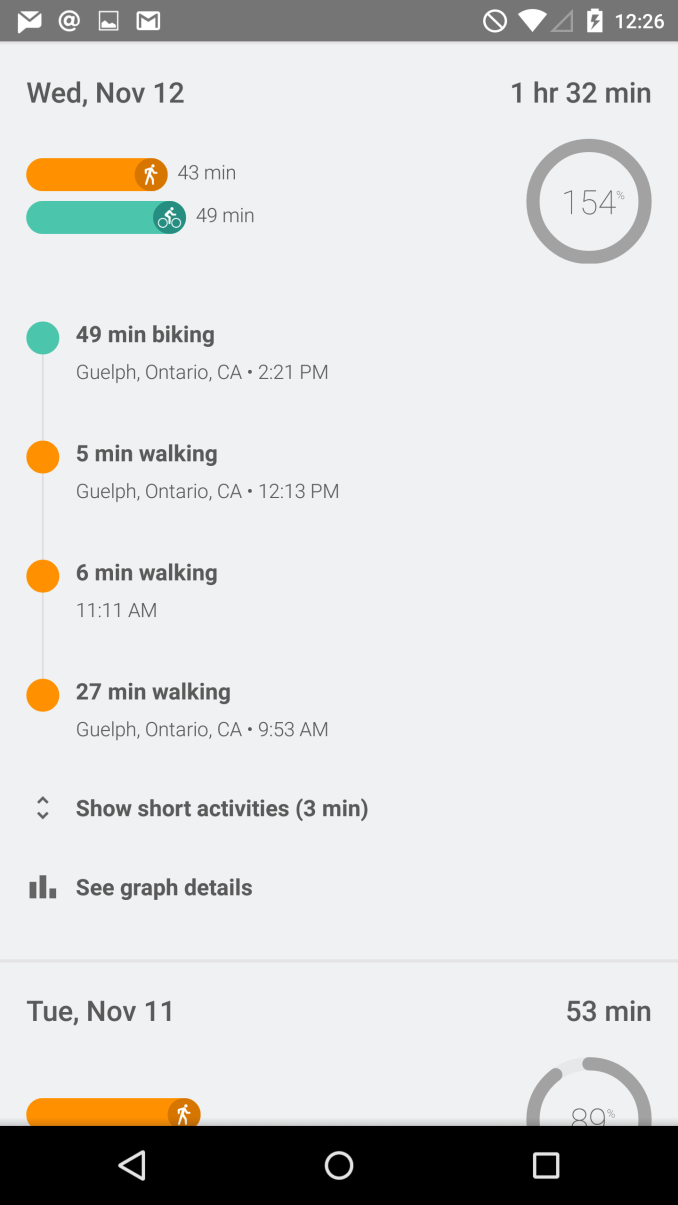
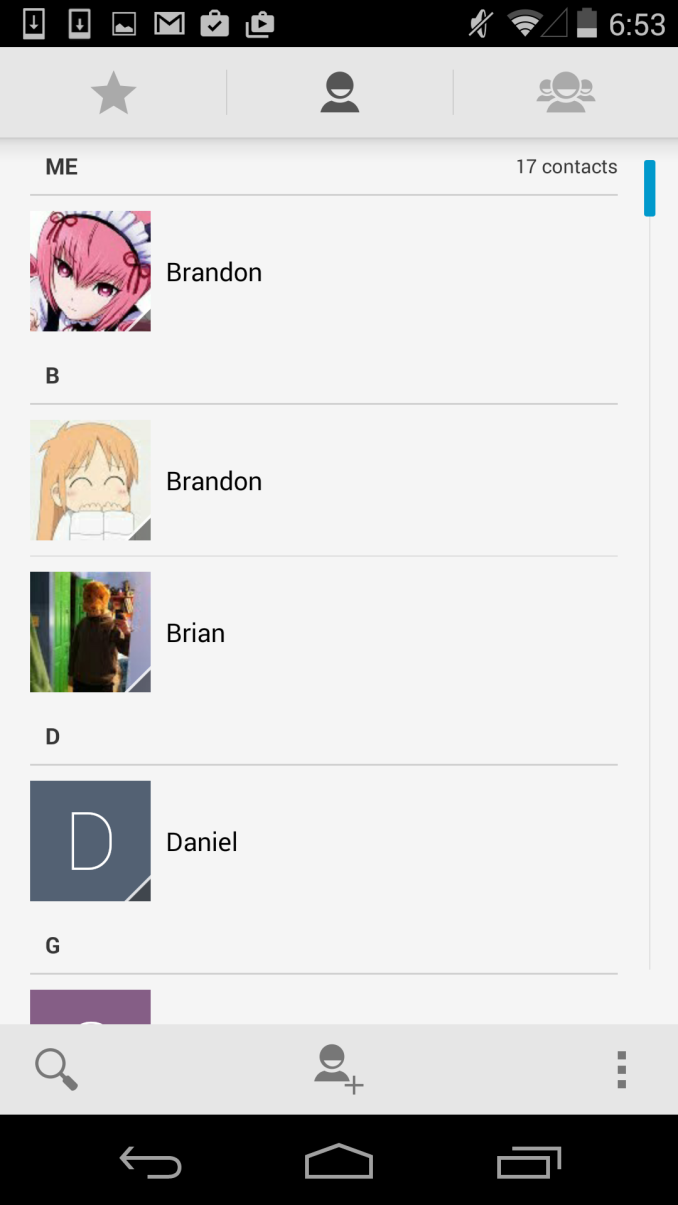
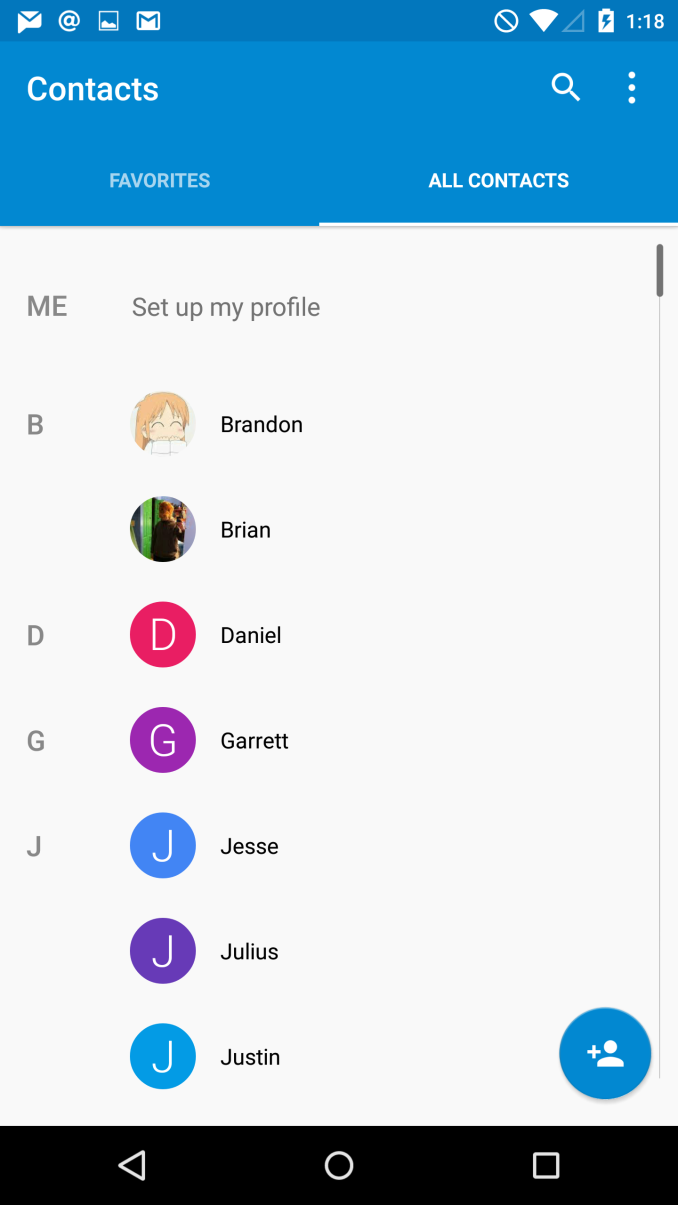
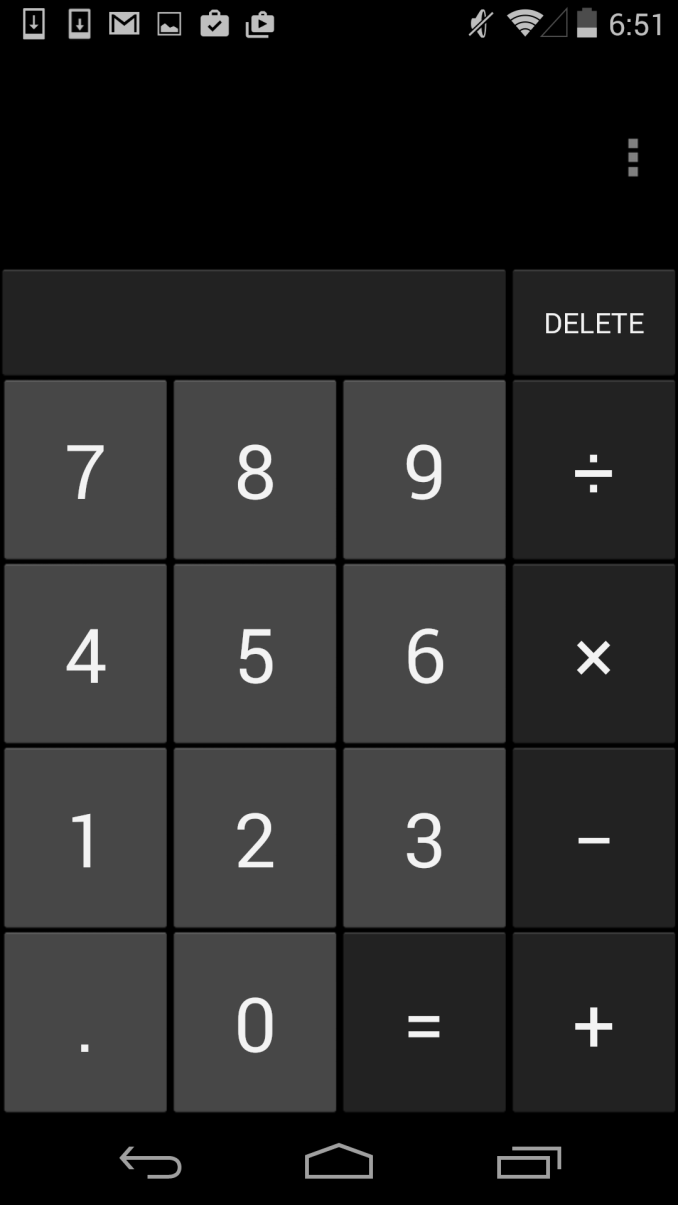
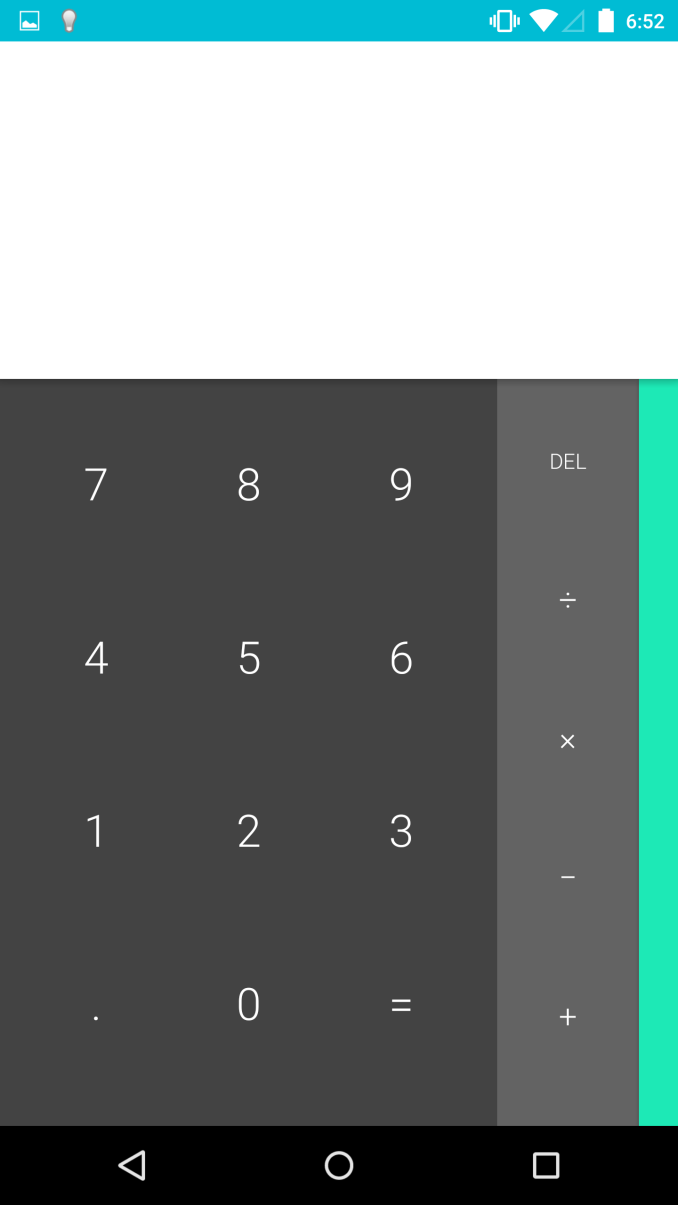
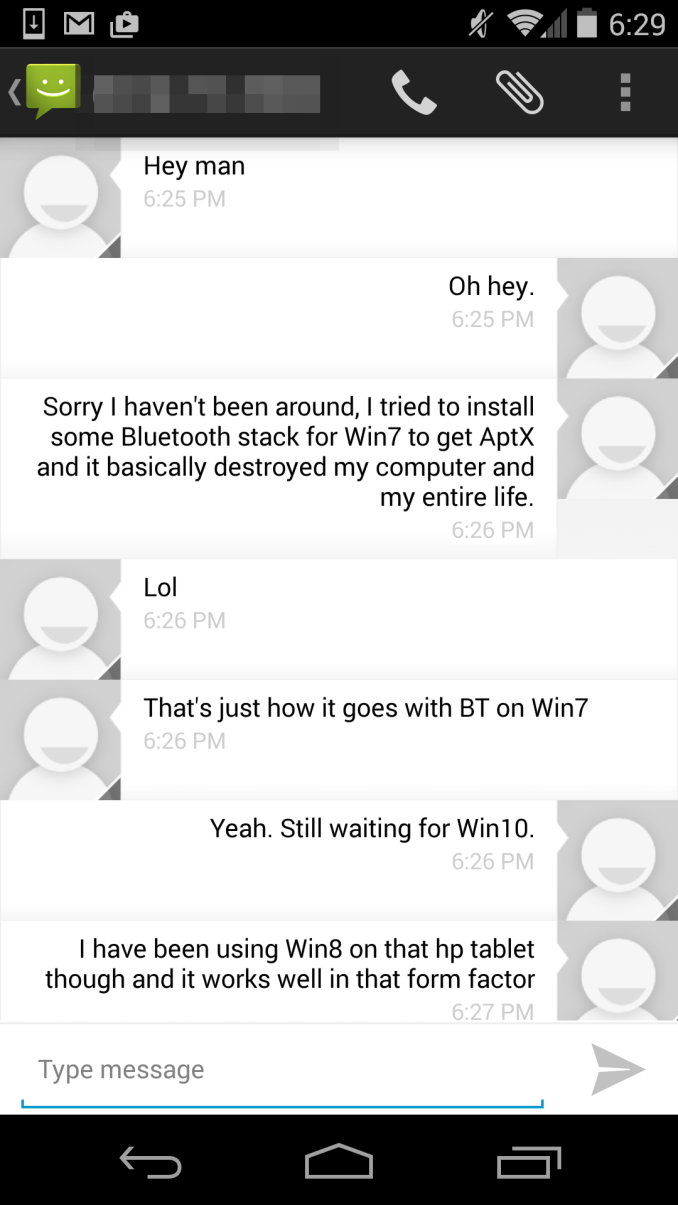
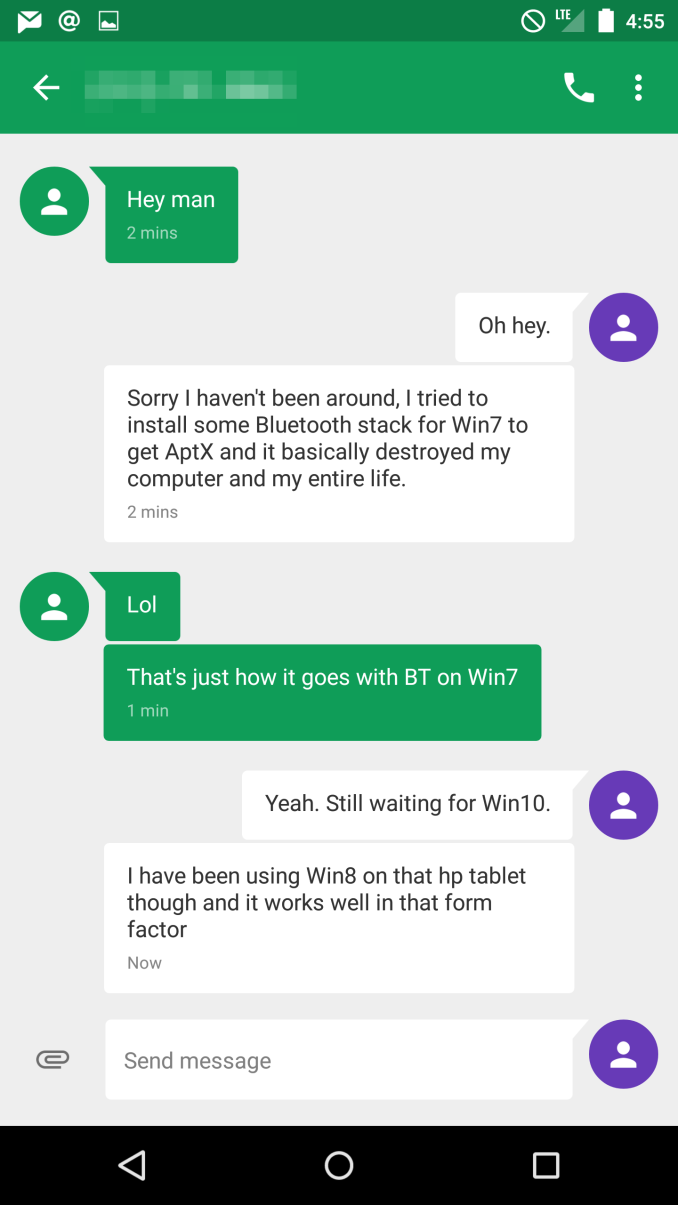









126 Comments
View All Comments
simboss - Monday, December 1, 2014 - link
"In fact, I haven't really noticed any significant bugs at all after upgrading to Lollipop, which says a great deal about the work Google has put into testing to make sure things are stable. "really?
Both my Nexus 5 and 10 have been more unstable with Lollipop, crashing and even getting in a rebooting loop.
What devices have you used to do this testing?
simboss - Monday, December 1, 2014 - link
Adding to that that the default unlocking on the nexus 10 and the notifications are less efficient than they were.Ars had a pretty good summary of it:
http://arstechnica.com/gadgets/2014/11/the-nexus-1...
Brandon Chester - Monday, December 1, 2014 - link
Nexus 5 and Nexus 6. I've had no issues with the former, and I was just speaking from my experience on the matter. I haven't seen any major complaints elsewhere though.JarredWalton - Monday, December 1, 2014 - link
I've had a SHIELD Tablet and Nexus 5 both lock up and require a reboot more often than with 4.4. Might be more of a factor of playing games (PvZ 2, AC Unity Companion), and I don't mind the change in general, but I think we'll see a few updates and maybe 5.0.2 or whatever will be needed before we really clear up the remaining glitches.blzd - Monday, December 1, 2014 - link
Same here with my Nexus 5. It would seem (quite a few others have noticed this as well) that if you don't reboot the phone eventually just dies. It's happened to me twice only to work perfectly again after the reboot, and hasn't happened since I started rebooting nightly.The theory is a memory management/leak bug but it's tough to tell.
Impulses - Tuesday, December 2, 2014 - link
That happened with Kit Kat too tho, if you pummeled Chrome with enough tabs or generally just kept enough things open it'd eventually get weird... Keyboard would act up, my 3G or GPS would occasionally work intermittently, etc. Reboot always fixed it... On face value it sounds less stable than my older Android phones but I never did quite as much on them as on the Nexus 5 either (and/or I'd end up rebooting to flash stuff for features I don't really need anymore).errorr - Monday, December 1, 2014 - link
My Nexus 5 has been great and jank only shows up when it gets hot... Otherwise it has been awesome for me.Unfortunately not so for the wife. She has a memory leak somewhere since the update and her Nexus 5 is almost unusable as everything grinds to a halt.
Jon Tseng - Monday, December 1, 2014 - link
One cool thing I just noticed today - apps can now change colour of status bar to match their UI.Websites can also do this (thought not many are doing it at the moment) e.g. BBC News turns status bar red.
bensulli - Monday, December 1, 2014 - link
Hang on, why no battery life tests? One of Lollipop's biggest draws is Project Volt which claimed an increase of up to 30% in battery life. Anandtech does the most comprehensive battery life evaluations on the internet, why not here?Great article otherwise though! Thanks!
Brandon Chester - Monday, December 1, 2014 - link
I really would have liked to, but Volta has more to do with increasing battery life through better coalescing of CPU and network usage. When you do a battery life test which is just a web browsing or video playback test, none of those improvements have much of an impact. With the current state of mobile and how sandboxing works, it's very hard to build a battery benchmarks that can string together multiple applications being used to simulate a workflow that would get better battery life on Lollipop compared to KitKat.